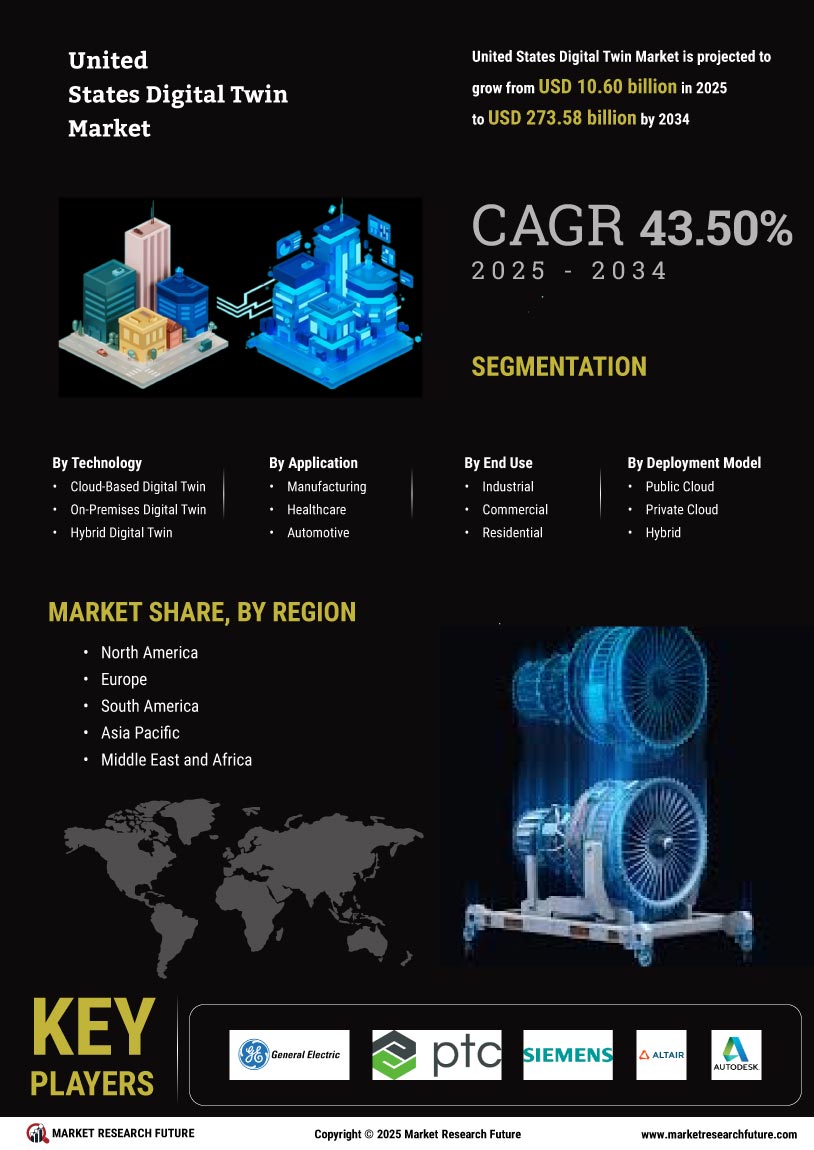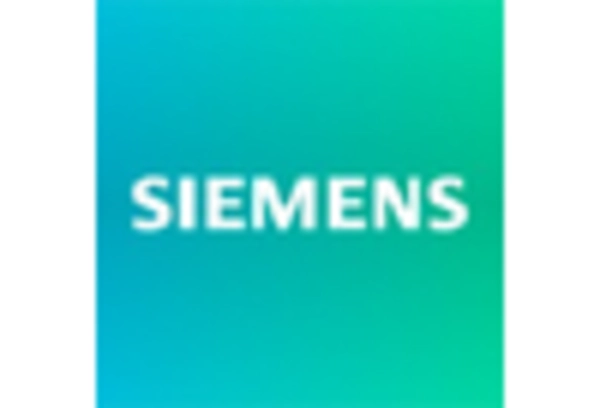Advancements in Simulation Technologies
Advancements in simulation technologies are significantly influencing the digital twin market. The integration of sophisticated simulation tools allows organizations to create highly accurate digital representations of physical systems. These tools enable businesses to conduct various scenarios and analyze outcomes without the risks associated with real-world testing. Industries such as automotive and healthcare are particularly benefiting from these advancements, as they can optimize product designs and improve patient outcomes. The digital twin market is witnessing a shift towards more complex simulations, which are expected to enhance decision-making processes. As simulation technologies continue to evolve, the market is likely to see an increase in adoption rates, further propelling growth.
Growing Need for Real-Time Data Analysis
The growing need for real-time data analysis is a critical driver of the digital twin market. Organizations are increasingly recognizing the value of data-driven decision-making, which necessitates the use of digital twins to analyze and visualize data in real-time. This capability allows businesses to respond swiftly to changing conditions and optimize operations accordingly. Industries such as energy and utilities are particularly focused on harnessing real-time data to improve efficiency and reduce costs. The digital twin market is likely to expand as more companies invest in technologies that enable real-time data integration and analysis, thereby enhancing their competitive edge.
Rising Demand for Predictive Maintenance
The digital twin market is experiencing a notable surge in demand for predictive maintenance solutions. Industries such as manufacturing and aerospace are increasingly adopting digital twin technology to enhance operational efficiency and reduce downtime. By creating virtual replicas of physical assets, organizations can monitor performance in real-time and predict potential failures before they occur. This proactive approach not only minimizes maintenance costs but also extends the lifespan of equipment. According to recent estimates, the predictive maintenance segment within the digital twin market is projected to grow at a CAGR of approximately 25% over the next five years. This trend indicates a strong inclination towards leveraging digital twin technology for maintenance strategies, thereby driving growth in the digital twin market.
Regulatory Compliance and Risk Management
Regulatory compliance and risk management are becoming increasingly important in the digital twin market. As industries face stricter regulations, the need for accurate modeling and simulation of processes is paramount. Digital twins provide organizations with the tools necessary to ensure compliance with safety and environmental standards. This capability is particularly relevant in sectors such as oil and gas, where regulatory requirements are stringent. The digital twin market is expected to grow as companies leverage this technology to mitigate risks and enhance compliance efforts. By adopting digital twin solutions, organizations can not only streamline their operations but also safeguard against potential regulatory penalties.
Increased Investment in Smart Manufacturing
The digital twin market is being propelled by increased investment in smart manufacturing initiatives. As companies strive to enhance productivity and reduce operational costs, the adoption of digital twin technology becomes more prevalent. Smart manufacturing leverages IoT, AI, and machine learning, creating a synergistic effect that enhances the capabilities of digital twins. According to industry reports, investments in smart manufacturing are expected to reach $400 billion by 2026, indicating a robust growth trajectory. This influx of capital is likely to drive innovation and expand the digital twin market, as organizations seek to implement advanced technologies that facilitate real-time monitoring and optimization of manufacturing processes.


















Leave a Comment